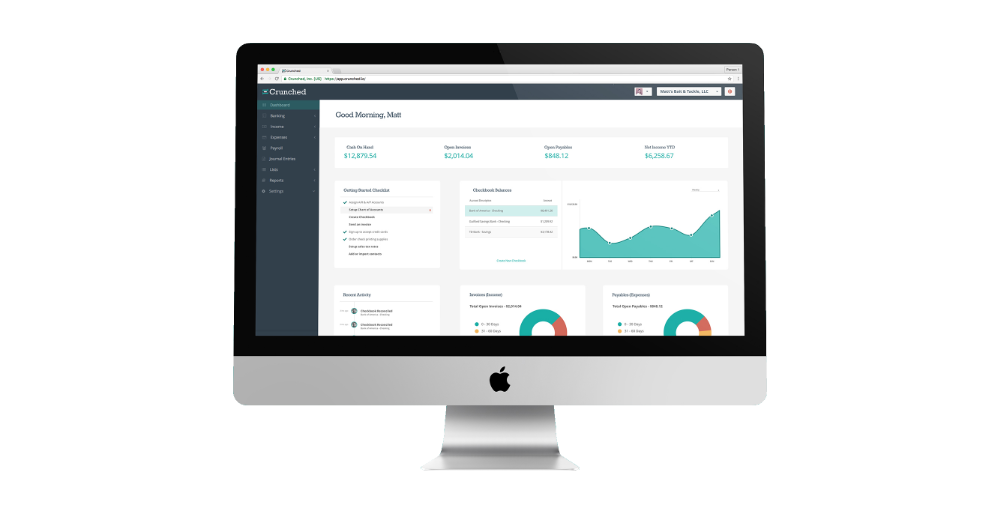Deciding How to Invoice Your Clients
By Charlie Fletcher
Invoicing is more complicated than it first appears. The details of your invoices relate to several critical business decisions about how you charge, how you track your work, and who you are as a freelancer or business.
Thinking about invoices, their layout and content, and what functions they serve, can help you solidify your professional image and retain customers. Answering several important questions can guide you when determining what invoicing process and service you end up using.
Hourly Fee vs Project Fee
One of the biggest decisions you can make is how your charges are structured. Do you charge per hour, or do you charge a lump sum for a particular project? Both ways of tracking your work have advantages and disadvantages, and will appeal to different businesses. In general, project fees are a better way to work, but some professions require hourly rates.
Hourly Rates
Pros:
They are more flexible. If a project takes longer than expected, you just add hours. And if it takes less time than expected, you can tell the client they’re getting a deal!
It establishes a dollar amount value of your time.
Cons:
Paying you hourly can make the relationship feel more like employer and employee, instead of service provider and client.
It’s more difficult to quote, and ask for a deposit with a project based on an hourly rate, as the final price will be variable depending on the time you spend working.
Clients tend not to know how long the work they’re ordering takes, and so are more likely to dispute a bill and argue that you spent too long on a project, or are artificially inflating your timesheet.
As you get faster at performing work, you make less money for it!
Project Fees
Pros:
It can help to avoid disagreements and set boundaries by setting a flat fee right away.
Easy to quote, and easy to ask for a deposit based on a flat amount.
The relationship is more clearly defined as the client paying for a service.
Emphasizes the value of what you’re delivering, rather than the amount of time it takes you to do it.
As you get better and a project takes less time, you make the same money despite a reduced number of hours.
Cons:
Clients might feel entitled to unlimited support and time if you don’t also have an hourly rate for additional work.
Projects can end up taking more time than you expected, which complicates your finances. This can be offset with a strong contract that establishes a payment protocol for expanding a project beyond its original parameters.
The type of business that you’re in may dictate how you invoice — if your primary service is your time, advice, and expertise, then hourly invoicing makes sense. On the other hand, if you provide a creative service that results in a product, project delivery or merchandise, then per-project fees are likely more applicable.
If you can, it’s usually best to go for a project fee. You can always add a timesheet and rundown of the work that went in when you send reports and the final invoice, but a flat fee for a service is much less likely to cause a headache with clients arguing about your rates.
What Are Your Payment Terms?
When you first begin negotiating a contract with a client, one of the other big decisions that affects invoicing is how and when you expect payment.
If you want to work with a deposit, you’ll need multiple invoices over the life of the same project, rather than a single one at the end. That means you’ll need better records and tracking of project progress.
Other payment terms include how you take payment. Do you want to work with Paypal, direct bank transfers, credit cards, checks? This decision will require you to analyze the risks of all the various options available.
Creating contracts and deciding how to execute payment plans with clients are complex matters. If you’re new at formalizing your payment structure, it’s a good idea to work from an invoice guideline; you can find all sorts of free resources to help you cope until you decide what functions and services you need. You’ll want accounting software eventually, but until you’re ready to lock down the process — which will require some trial and error — you can absolutely make use of the wealth of invoicing advice coming from blogs and resources like this one without needing to put money down right away.
There are tons of free resources available online. You can find invoicing systems from Invoicely and Wave, invoicing templates from InvoiceBerry and Invoice Simple, and accounting software like Crunched -- all free to use! A simple Google search and a few minutes of your time is all you need to get started.
Choosing which app or software service to use for tracking your time and billing clients greatly depends on the structure of your business, how you want to charge, and even how you wish to be perceived by your clients. These are decisions you don’t want to leave until the last minute, and certainly don’t want to pay for until you’ve had a chance to decide how you like to work. Keeping your finances straight as a freelancer can be difficult, but with organization, determination, and smooth invoicing, you’ll meet with success more often than not.
About the Author

Charlie Fletcher is a freelance writer from the lovely “city of trees”- Boise, Idaho. Her love of writing pairs with her passion for social activism and search for the truth. When not writing she is a part time wedding planner and spending time with her nephews. And yes, she does love all kinds of potatoes!


